Binary Options
The classic binary option is binary because it only has two possible outcomes: when the option expires, you either lose all your money or you get paid a pre-specified amount. Today, when binary options have become so popular online, some sites that sell binary options offer novel variants that actually have more than two possible outcomes, but these variants are quite rare and doesn’t make up the bulk of available binary options online.
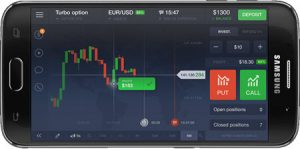
One of the reasons why binary options are so popular is because you know in advance exactly how large your profit will be if your binary option expires in the money. With a normal non-binary option, it is possible to finish in the money and still lose money, because the cost of buying the option was higher than what you are being paid upon expiry, e.g. if the underlying asset has just barely made it up to the required price level.
With binary options, you know even before you buy the binary option exactly what it will pay you if you buy it and it later expires in the money.
If you want to trade binary options you need an account with a binary options broker such as HighLow , Markets.com, Binary.com and ETX Capital.
Alternative names
All-or-nothing option
All-or-nothing option is an alternative name for binary option. It high-lights how you either get fully paid or lose the entire stake.
Digital option
Digital option is an alternative name for binary option. This term is especially common when the underlying is a currency pair or an interest rate.
Fixed Return Option (FRO)
The American Stock Exchange use the term Fixed Return Option (FRO) for the binary options traded on that exchange.
Cash-or-nothing vs. asset-or-nothing
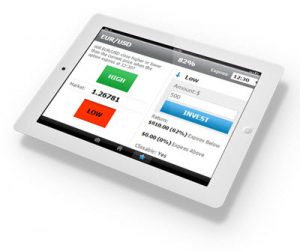
The cash-or-nothing is a binary option where you get paid in cash when the option expires in the money. This is by far the most common binary option.
With an asset-or-nothing, you get the value of the underlying asset if the option expires in the money. So, if the underlying asset is a share in JKX Oil & Gas plc (LSE: JKX), you get the price of one share that company if your binary option expires in the money.
How does it work?
The classic type of binary option is the Higher/Lower type.
Example: You buy a binary option where the underlying asset is NYSE: ABB (shares in ABB Ltd listed on the New York Stock Exchange). When you buy the option, NYSE: ABB is trading at 24.03 USD. The option is set to expire four hours from now, and will finish in the money if NYSE:ABB is trading above 25.00 when the option expires. So, this is an option that you would buy if you believe that the price of ABB shares are about to climb very soon.
What to do if you believe that the price of ABB shares are about to drop? Well, you can buy a Lower binary option, e.g. a binary option that will pay you money if the price of NYSE: ABB is lower than 23.50 when the option expires in four hours from now.
Payout
The possible payout is stated clearly when you look at available binary options. You set the parameters for the binary option on the trading platform and see how much you would get paid if you bought this binary option and it expired in the money.
Consolation price
Some binary option sellers have tweaked the basic premise of binary options by giving you a small consolation price if your binary option expires out of the money but very close to the money.
Binary option variants
Here are a few examples of binary options that do not stick to the classic High/Low configuration. Please note that each vendor of binary options can make up their own names and rules for their options, so it is important to always check the find print.
Up/Down
When the option expires, will the price of the underlying be higher or lower than when you bought the binary option? If you think it will be higher, buy an UP binary option. If you think it will be lower, buy a DOWN binary option.
Touch/No Touch
Will the price of the underlying ever touch a certain predetermined point throughout the lifespan of the binary option? If you think it will, buy a TOUCH binary option. If you think it wont, buy a NO TOUCH binary option.
Ends In/Out
When the binary option expires, will the underlying asset price be within a certain predetermined range? If you think it will, buy an ENDS IN binary option. If you think it wont, buy a ENDS OUT binary option.
Stays In/Goes Out
Will the underlying asset price stay within a certain predetermined range throughout the lifetime of the binary option? If you think it will, buy a STAYS IN binary option. If you think it wont, buy a GOES OUT binary option.
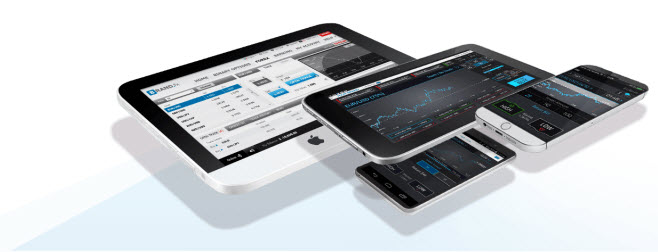
Commodity-Based Binary Options
If you’ve used classic binary options before (read the text above), you already know how the setup works. You choose an asset, pick a direction, lock in a time frame, and decide how much you’re willing to risk. You’re not buying the asset itself — you’re betting on whether its price will be higher or lower when the clock runs out. That structure can apply to almost anything with a price chart, including stocks, stock options, exchange-rates, and commodities. In this article, we will take a closer look at how one can use binary options to speculate on commodity prices.
If you feel you want to learn more about binary options in generally before you dig deeper into commodity-based binary options then I recommend you visit BinaryOptions Net.
Using Binary Options to Gain Exposure to Commodity Prices
While many binary options traders stick to forex pairs or stocks, commodity-based binary options offer a very different kind of opportunity. You’re not tracking earnings reports or central bank chatter — you’re reacting to oil inventories, weather events, geopolitical risks, and global supply chains. It’s a different beast, and it moves on its own set of triggers. If you understand what makes these markets tick, and can handle risk in an appropriate way, there is money to be made. If you don’t, you’re just guessing with your money on the line.
When you enter a binary options trade based on a commodity price, you’re not actually buying gold, oil, wheat, or some other commodity. You’re not taking delivery of barrels or bushels. Instead, you’re placing a short-term wager on where the world market price of that commodity will be at a specific point in time.
If you think crude oil will be above $75 in the next five minutes, you buy a five-minute binary option and hit “Call.” If you think it’ll drop, you hit “Put.” If you’re right at expiry you get the fixed payout. If you’re wrong, you lose the entire stake.
Commodities on Binary Options Platforms
Many binary options platforms will only offer speculation on a handful of common commodity; typically crude oil, gold, silver, natural gas, and sometimes one ore more agricultural products like corn or coffee. The selected commodities are typically commodities that are heavily traded in futures markets, which keeps the liquidity high, and they move enough during a single trading day to make super short-term trading viable.
Each commodity comes with its own personality. Gold is often seen as a safe haven, rising during uncertainty but sensitive to interest rates. Crude oil reacts to inventories, war, and economic demand. Natural gas swings wildly on weather and supply numbers. Each commodity is linked to real-world triggers. If you’re trading commodity binaries and you’re ignoring the news, you’re operating in the dark. Price action matters, but context matters more. You need to know why something’s moving, not just that it’s moving.
If you are interested in speculating on a specific commodity, e.g. because you have an edge when it comes to predicting its movements, you may need to look around for a while before you find a binary options platform that offers this specific commodity and also suits your needs and preferences in other ways. You can of course also skip the binary options and pick a platform where you can use other derivatives to gain exposure to the commodity, such as Contracts for Difference (CFDs). There are many different ways you can go about when you want to speculate on commodity prices, and binary options is just one method.
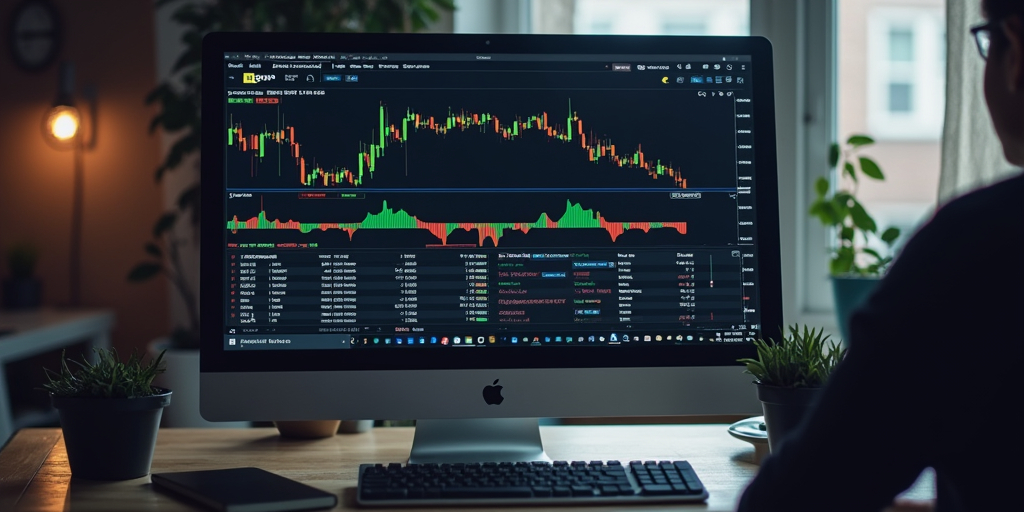
What is the difference between hard commodities and soft commodities?
Hard commodities are typically mined or extracted, and this group includes commodities such as crude oil, natural gas, and metals.
Soft commodities are usually agricultural products, e.g. sugar, wheat, cotton, coffee, and cocoa.
Hard Commodities
Examples of hard commodities:
- Energies, such as natural gas and crude oil
- Precious metals, such as gold, silver, and platinum
- Non-precious metals, such as aluminum, zinc, and lead
Crude Oil Futures
An oil futures contract is an agreements to buy or sell a certain number of barrels of crude oil on a certain date and for a predetermined price. The contract between the buyer and the seller is signed and secured with a margin payment, which covers a percentage of the total value of the contract.
The market for crude oil futures contracts is filled with both speculators (going for short term profits), investors (going for longer term profits), and users of crude oil (who need to hedge against volatility).
The two major crude oil contracts:
- In North America, the benchmark for oil futures is for West Texas Intermediate (WTI) crude, which is traded on the New York Mercantile Exchange (NYMEX).Typically, WTI prices are more sensitive to United States economic developments.
- In Europe, Africa, and the Middle East, the benchmark for oil futures is for North Sea Brent Crude, which is traded on the Intercontinental Exchange (ICE).
Gold Futures
A gold futures contract is an agreements to buy or sell a certain amount of gold on a certain date and for a predetermined price. Gold futures are standardized and traded on exchanges, which reduces counterpart risk. The market for gold futures is comprised of both speculators and hedgers. Compared to actually buying and selling physical gold, gold futures are cost-efficient and you can use much less capital to control a position.
Several different factors are known to impact gold prices, including inflation numbers, interest rates, gold supply, and geopolitical instability. Investors tend to seek out gold when markets and the socioeconomic landscape are stormy, and speculators are aware of this. Of all the precious metals, gold has historically been the most effective safe haven.
Since 1919, the dominating benchmark for the gold price has been the London gold fixing; a twice-daily phone meeting for representatives of certain bullion-trading firms on the London bullion market. The London gold fixing was established to fix a price for settling contracts between members of the London bullion market, but it is today also an internationally renowned benchmark used for many different financial gold products and derivatives around the world. The London Bullion Market Association´s (LBMA) gold price is set every business day at 10:30 am and 03:00 pm, London time. The price is not set in GBP but in USD. At the time of writing, the 14 participants in the fixing are the Bank of China, the Industrial and Commercial Bank of China, the Bank of Nova Scotia, the Toronto-Dominion Bank, HSBC Bank USA, the Bank of Communications, JPMorgan Chase, Koch Supply and Trading, Marex Financial, Morgan Stanley, Standard Chartered, Coins ‘N Things, INTL FCStone, and Jane Street Global Trading.
Soft commodities
Examples of soft commodities:
- Cocoa
- Coffee
- Sugar
- Frozen concentrated orange juice
- Wheat
- Cotton
Futures based on soft commodities such as rice and wheat are among the oldest derivatives we know. Access to soft commodities have a huge everyday impact on how we can feed our selves, what we can drink, and the clothes we wear, and when the global prices of these products move up and down it can have a noticeable impact on the average household economy.
Generally speaking, the soft commodity market is largely comprised of hedgers and speculators. Speculators are simply speculating on price movements, and many of them are short-term to mid-term traders. The hedgers use commodity derivative, such as futures contracts, to manage risks connected to the price of one or more commodities. A chocolate factory can for instance need to protect themselves against a volatile cocoa price, and cocoa bean farmers can wish to lock in the price in advance and protect themselves against the whims of the market. The hedgers form the foundation of the market, while the speculators ensure liquidity without having any direct interest in the actual physical products.
CFTC and the COT Reports
Futures contracts on soft commodities are listed on major exchanges, such as the Intercontinental Exchange (ICE), the Chicago Board of Trade, and the Kansas Board of Trade. In the United States, they are regulated by the Commodity Futures Trading Commission (CFTC), who publish weekly Commitments of Traders (COT) reports. As a trader, these reports can be very important when you try to spot trends in soft commodities.
If you look into a COT report, you will see the actors divided into four categories:
- Producer/merchant/processor/user. These are business directly involved in the soft commodity, e.g. coffee roasters and wheat producers.
- Swap dealers. This category is comprised of financial institutions that will act as intermediaries.
- Managed money. Large asset management firms and hedge funds are generally considered speculators, but will do hedging as well as necessary.
- Other reportables. This category consists of all the other traders who are obligated to report their positions to the CFTC, since they have reached above a certain threshold.
Example: Trading cotton
Cotton is traded using 50,000-pound contracts.
The contract months are March, May, July, October, and December .
The delivery points are Galveston, Greenville/Spartanburg, Houston, Memphis, and New Orleans, Memphis.
The price is quoted as cents (0.01 USD) per pound.
Example: Cotton is trading at 48 cents per pound. This means that 1 contract is valued at $0.48 x 50,000 pounds = $24,000.
The minimum tick size for cotton is normally $0.0001, which equals $5 per contract. If the price of cotton exceeds 95 cents per pound, however, the minimum tick size expands to $0.0005 to accommodate.
Example: Trading coffee
Coffee is traded using 37,500-pound contracts.
Coffee is deliverable in March, May, July, October, and December.
The delivery points are worldwide ports, including Antwerp, Barcelona, Hamburg, Houston, New Orleans, New York, and Miami.
The price is quoted as cents (0.01 USD) per pound.
Example: Robusta coffee is trading at 99 cents per pound. This means that 1 contract is valued at $0.99 x 37,500 pounds = $37,125.
The tick size for coffee is 5 cents per pound.
Arabica coffee is traded in New York, while Robusta coffee is traded in London.
Coffee is one of the soft commodities with the largest intraday volatility.
Commodity Price Movements
Commodities respond to physical supply and demand in the real world. Oil prices can jump on a pipeline explosion. Gold can rise on fear, drop on strength, then reverse on inflation expectations — all in the same trading day. Natural gas? That one dances to the tune of weather patterns, storage data, and sometimes just pure madness.
What makes commodity binaries so unpredictable for new traders is the lack of rhythm. There’s no earnings calendar, no consistent economic data cycle. Instead, you’ve got news shocks, inventory reports, OPEC announcements, crop failures, shipping blockades — real-world events with real consequences that hit these markets fast and hard.
For many commodity speculators, that volatility isn’t a bug, it’s the whole point. In short-term binary options trading, movement equals opportunity. Commodities deliver that, and you need to learn how to profit from it while limiting your downside.
The same things that make commodities attractive also make them harder to manage. Their volatility can be unpredictable, and their reactions to news can be exaggerated. A small headline can cause a big move, and then reverse it five minutes later. And when you’re wrong with binary options, there’s usually no soft landing and stop loss orders — just a busted trade and a smaller account.
There’s also the issue of data access. Stock traders have earnings reports and analyst coverage. Currency traders follow central banks and economic calendars. Commodity traders? They’re watching inventory numbers, weather maps, refinery outages, crop yields, and freight bottlenecks. If you’re not plugged into those updates, you’re likely reacting too late.
And unlike exchange-traded stocks and major forex pairs, some commodity markets don’t move all day. Liquidity can drop off in the wrong session, spreads can widen, and price behavior can get erratic. If you’re trading binary options on crude oil outside the main trading hours, you might fund yourself in a ghost town — and the chart might not behave the way you expect.
Why Explore Commodity Speculation
For some traders, it’s about diversification. If you’re already trading currency pairs or stock indices, adding commodities can give you exposure to a different set of drivers. When equities are flat or currencies are reacting to mixed signals, commodities might be flying off the back of an inventory report or a geopolitical headline.
Others are drawn to the volatility. Commodities move fast, especially around scheduled data releases. That creates potential for short-term binary setups that either succeed quickly or fail fast — which, depending on your style, can be exactly what you want.
There’s also the appeal of cleaner directional movement. In some cases, commodities trend hard off a single catalyst — an OPEC decision, a major storm, a supply chain break. If you’re on the right side of it, you don’t need to hold for long. One candle is often enough.
Trading Strategy
Commodity-based binaries aren’t inherently riskier than other binary options — but they are more reactive. If you’re just clicking based on gut feeling, it’s going to feel like putting all your money on red at the roulette table. But if you’re actually watching the calendar, the news, and the bigger picture, you can find real edges. The best traders in this space treat it seriously. They know when key reports drop. They’ve mapped out levels based on previous reactions. They’ve watched how gold behaves when the dollar strengthens or what oil tends to do ahead of an OPEC meeting. There’s nothing magical about it. It’s just homework.
Binary options themselves are a blunt tool. They only ask one question: will the price be higher or lower when the clock hits zero? When you combine that with a commodity market that’s reacting to real news, the simplicity can become your edge — but only if you’re on top of what’s driving the move.
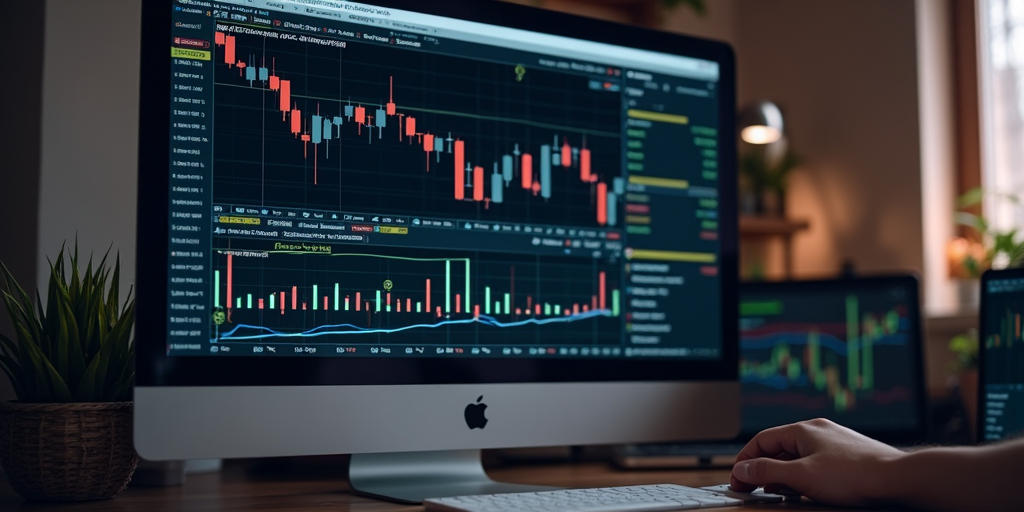
Other Commodity Derivatives
Commodity markets are older than modern stock exchanges. Since time immemorial, people have traded commodities such as grains and metals, and the use of commodity-based derivatives is actually quite old too. The ancient Sumerians would use clay tokens sealed inside a clay vessel to represent the amount (e.g. number of goats) that was to be delivered. The promise of a certain amount of a commodity, and a time and date of delivery of that commodity, resembles a modern futures contracts. The oldest known contracts of this type have been dated to 4500 BC – 4000 BC.
Today, a trader who want to gain exposure to commodity prices have several different derivatives at their disposal, so you do not have to use binary options if you don´t want to. Binary options are heavily marketed to inexperienced traders, and many find their simplicity appealing, but they do come with several downsides that should be take into consideration before you put any money on the line. It is a good idea to take a look at other derivatives as well, before you decide which one fits your preferences and financial goals the best.
Binary options and other derivatives have many positive traits. Actually trading physical commodities comes with problems — storage, transportation, spoilage, security, etcetera. Derivatives remove all of that. You get the price exposure, the ability to hedge or speculate, and the flexibility to trade in and out quickly. Many derivatives also offer leverage, which means you don’t need to tie up large amounts of cash to control big trades. You can manage risk, scale positions, and build more complex strategies that react to market conditions without locking yourself into long holds.
Commodity-based derivatives are extremely important and widely used by everyone from hedge funds and day traders to farmers and oil refinery corporations. They offer leverage, hedging power, and exposure to global markets without ever requiring you to store a pile of soybeans or 100 barrels of crude oil. If you’re only familiar with binary options or spot markets, the rest of the commodity derivative world might look complicated. But the structure behind it is pretty simple once you understand who’s using what — and why. For traders focused on short-term moves, derivatives offer opportunities to profit from volatility, but for businesses managing real-world costs, they offer insurance and peace of mind. The original derivatives – such as commodity futures – were designed to solve a problem rather than facilitate pure speculation.
Futures
The futures contract is the most widely used and most regulated type of commodity derivative. At their core, futures contracts are agreements to buy or sell a specific commodity at a set price on a set future date. Most of the time, nobody actually wants the product — they’re just trading the contract.
A wheat producer might sell futures to lock in a price ahead of harvest. A food company might buy those contracts to hedge against a price spike. In between them are thousands of speculators who don’t care about wheat at all — they’re just trying to make money on the price movements.
Futures trade on major exchanges like the CME and ICE. They come with margin requirements, expiry dates, and massive liquidity in certain markets like oil, gold, natural gas, and corn. What makes them powerful is how direct they are. You’re trading the raw price. There’s no middle layer. But that also means risk is higher. Futures can move fast, require more capital, and if you’re on the wrong side with no stop, you’re exposed in real-time.
Options on Futures
Commodity options are options contracts based on commodity futures contracts, and they give the holder the right, but not the obligation, to buy (call option) or sell (put option) a futures contract at a predetermined price before a specific date.
Institutions and big commercial players often use commodity options to hedge risk, but individual traders also use them to make leveraged bets with limited downside. Instead of trading the full futures contract, you can trade an option that gives you exposure to that contract’s price movement without committing to the full position.
It’s a second layer of complexity, but it adds control. You can use options to protect futures trades, speculate on volatility, or even structure income-generating positions. Unlike binaries, these aren’t all-or-nothing trades — your position’s value shifts in real-time based on how far in or out of the money it is, how much time is left, and how volatile the underlying commodity is.
Commodity options add flexibility, but they require strategy. If you’re not clear on what you’re betting on — price, time, or volatility — you’ll lose money fast.
Contracts for Difference (CFDs)
Contracts for Difference (CFDs) are synthetic products that track the price of a commodity but never involve owning it. You’re not trading the commodity itself, or even a futures contract — you’re trading a mirror of the price movement, offered by the broker. With CFDs, your broker is also your counterpart in the trade – just like with binary options.
You can go long or short, and the brokers tend to be very flexible when it comes to lifespans and how much you want to risk. CFDs are leveraged products and you can gain exposure to pretty big positions using only a meager amount of money from your trading account. You can open a gold CFD and close it in two minutes, or hold it for days.
As mentioned above, the broker is also your counterpart in the CFD trade. You’re trading against the broker, not with other traders on a centralized exchange. That opens the door to pricing issues, slippage, and shady practices if the broker isn’t reputable.
In the United States, the U.S. Securities and Exchange Commission (SEC) and the Commodity Futures Trading Commission (CFTC) restricts CFD trading because it is an over-the-counter (OTC) financial instrument that is not compliant with US securities laws. CFDs are not permitted to be listed on regulated exchanges in the United States and online trading platforms are not allowed to offer CFDs to traders in the U.S.
In many other parts of the world, brokers can legally offer CFDs to traders, but special provisions are in place to prevent retail traders (non-professional traders) from taking on too much leverage. Many financial jurisdictions, including the UK FCA, ASIC, and CySEC, have a general leverage cap at 1:30 for retail traders, and an even lower cap in place for commodity speculation. CySEC will for instance not permit a higher leverage than 20:1 for gold CFDs, and for other commodities the cap is 1:10 (in both cases the caps only apply to retail traders).
Swaps and Forwards
You are unlikely to see any commodity swaps or commodity forward contracts on the average retail trading platform, because derivatives are used mostly by large institutions to hedge price risk or create structured exposure in over-the-counter markets.
- A forward is similar to a futures contract, but it’s typically tailor-made (not standardised) and traded OTC (not listed on an exchange). Two parties agree to a future price and settle at expiration.
- Swaps go one level further in complexity and non-standardisation. They involve a series of payments based on price movements — for example, a floating commodity price versus a fixed one.
These tools are critical in industries like energy, where price stability matters more than speculation.
You will probably not be trading these directly unless you’re on the institutional side. but it helps to understand that much of the global commodity risk is managed through these contracts — not retail futures or CFDs. When oil prices move, it’s often not because traders on a platform clicked “buy” — it’s because massive hedging flows just moved through the financial system.
How to Select a Broker for Commodity Speculation
If you want to get into commodity speculation, you do not have to go with a binary options platform if you don´t want to – you can sign up with a traditional online broker and use other derivatives, such as Contracts for Difference (CFDs), commodity futures, and commodity options. You can compare brokers including binary options brokers by using the BrokerListings compare function.
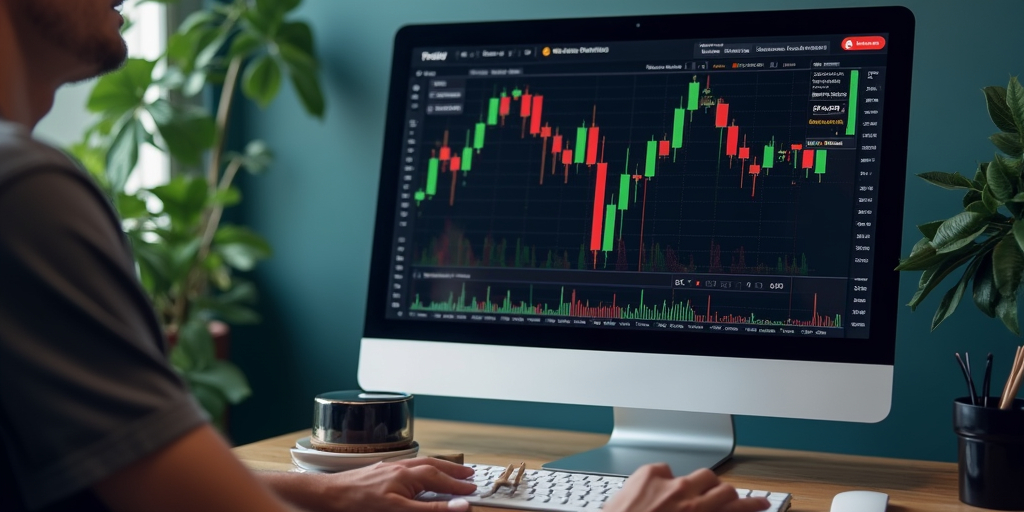
If you are a retail trader, you are probably already aware that most of the stricter financial authorities have banned brokers from offering binary options to retail clients. Because of this, the large and reputable brokers have largely stopped offering binary options to retail clients. Instead, binary options trading for retail traders is commonly offered by specialized binary options trading platforms online, and the entities behind the platforms are often based in countries that are known to be very lax when it comes to trader protection. For the retail trader, this poses a problem, because it has become even more difficult to weed out fraudulent binary options broker and low-quality binary options brokers.
If gaining exposure to commodity prices is your main objective, and you are concerned about falling into the hands of a disreputable broker, the easiest solution is to skip the binary options and go for a classic broker instead, where you can use other derivatives to speculate on commodities. This way, you can pick a broker regulated by a strict financial authority that provides better trader protection.
A license from a top-tier regulator like the CFTC, UK FCA, ASIC, CySEC, or BaFin usually means the broker is obligated to follow strict rules, keep client funds segregated from company funds, and file regular reports with the financial authority. These companies are less likely to disappear with your money, and you will have better access to mediation and legal recourse if an issue arises between you and the broker.
For optimal protection, it is best to pick a broker that is regulated within your own country, because then you might be covered by a governmental protection scheme for investors and traders that will pay out if the broker fails to adhere to its financial obligations due to insolvency. For traders within the European Union, it is enough to pick a broker regulated in any of the membership countries.
Unregulated or loosely regulated brokers might offer fast sign-ups and high leverage, but they also operate without much accountability. They can manipulate prices, delay withdrawals, close trades on technicalities, or refuse to pay out winning positions — and there’s not much you can do about it after the fact. If you’re serious about protecting your capital, start by checking the regulatory body. If it doesn’t look legit, it is best to walk away.
Asset Access
- Make sure the broker offers speculation on the commodity or commodities you are interested in, and with good terms and conditions. Some brokers limit your options to just a few big names like gold and oil. Others offer deeper exposure — including energy, soft commodities like cocoa and coffee, or even rare metals. Depending on your strategy, more options can mean more flexibility. But only if they’re priced and executed properly.
- Make sure the broker uses prices that track with real-time global benchmarks. Some shady brokers will offer convoluted synthetic products that are only loosely tied to actual commodity prices.
Platform
Platform stability is another piece people ignore until it costs them. You don’t want the platform crashing during an NFP release or your futures position freezing right before a report drop. If the broker’s platform is buggy or outdated, your risk has nothing to do with the market — it’s the tech.
The platform should not only be stable, but also easy to navigate and use. Ideally test it out using a free demo account filled with play-money before you make any decision.
If you want to be able to make trades and manage your account from your phone, make sure there is a high-quality app available.
Execution Speed
When you’re trading binary options or short-term contracts, speed matters. A few seconds of delay can make the difference between a win and a loss — especially in fast-moving commodity markets where prices spike on news, reports, or sudden supply shocks. A solid broker should offer fast execution, minimal slippage, and zero manipulation. If trades are consistently opening a few points away from where you clicked, that’s not lag — that’s likely intentional.
Before risking anymore than just minimal amounts, test the platform during busy market hours. Place trades during overlapping sessions. Watch how it behaves when things get hectic. If it can’t hold up, it’s not worth your money. Regrettably, this is sometimes not possible to find out in demo mode, since demo mode can be a bit too perfect – there is no lag or slippage since everything happens with play-money instead of real money.
Transparent Payouts and Fee Structures
With binary options, payouts are usually fixed and how much you’re paid per winning trade can vary between different binary options. Some offer 80 to 90 percent, others drop as low as 60 percent – and the differences can also be big between different binary options trading platforms. That difference adds up fast, especially if you’re trading frequently. This is also a situation where the math is really not fair to the trader, and one of the reasons why many traders turn their back on binary options as they gain more experience. When you lose on a binary option, you lose 100% of your stake. If you risked $100, the full $100 goes to your broker. When you win on a binary option, you only get the predetermined profit, e.g. 80%. Your broker only has to give you back your $100 stake + $80 profit. Over time, this difference will statistically make a big difference for your bottom line.
This does not mean that other derivatives are without downsides. Regardless of which derivative you pick to speculate on commodities, make sure you fully understand the cost of spreads, overnight fees, commissions, leverage usage, and any hidden costs that you might have to dive into the fine print to understand. Always calculate what it would cost to employ your trading strategy, and take costs into account. Some brokers offer zero commissions but widen the spreads. Others charge rollovers, withdrawal processing fees, or platform fees that quietly eat into your balance.
You need a broker that is both affordable and transparent. If you can’t find a clear breakdown of costs, or if the broker keeps shifting the numbers around during peak hours, it might be time to step away.
Risk Management Tools That Actually Work With Your Strategy
Solid risk-management routines are always imperative if you want to be a long-term profitable trader, and if you want to bring volatile commodity markets and leverage into the mix, it becomes even more important to really stay on your toes when it comes to risk-management.
If your broker pushes trading and leverage without giving you appropriate tools to manage it, that’s a problem. A proper setup should give you tools such as several types of stop-losses and take-profit levels, and easy to use margin alerts. Many binary brokers don’t allow stop features — that’s normal – and yet another reason why many experience traders stay away from them.
If you’re forced to manually exit trades or if margin calls wipe out your balance with no proper warning, the platform isn’t built to protect you and help you become profitable.
Efficient Withdrawal Process
You can make the best trades of your life, but if your broker won’t let you withdraw your profits, it’s all pointless. A legit broker should provide fast, reliable withdrawals through multiple methods — bank transfer, card, e-wallets — and shouldn’t make you jump through more hoops than required by law.
Brokers licensed by reputable financial authorities will ask you to prove your identity (photo of your passport/drivers license/ID-card) and show proof of where you live (e.g. utility bills), in order to comply with legally mandated know-your-customer protocols instated to prevent money laundering etc. This is normal, and the opposite of a red flag. However, some shady brokers are taking advantage of this and will make you jump through hoop after hoop, because they do not want you to withdraw your money. No matter how much documentation your provide, it will never be enough. Be careful and do not keep too much money in your trading account before you really have reason to trust your broker with it. If a broker licensed by a financial authority starts giving your the runaround and freezes your account, report them.
Before you make your first deposit, spend some time and effort reading real reviews — not just the five-star ones on the broker´s own homepage. Look at forums, social media, even complaint boards. If traders are consistently struggling to get their money out, you can expect the same treatment. Brokers that treat your profit like it’s their money aren’t worth trading with, no matter how good their platform looks.
This article was last updated on: August 3, 2025